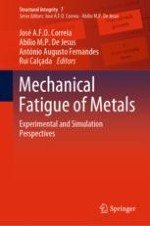This volume contains the proceedings of the XIX International Colloquium on Mechanical Fatigue of Metals, held at the Faculty of Engineering of the University of Porto, Portugal, 5-7 September 2018. This International Colloquium facilitated and encouraged the exchange of knowledge and experiences among the different communities involved in both basic and applied research in the field of the fatigue of metals, looking at the problem of fatigue exploring analytical and numerical simulative approaches.
Fatigue damage represents one of the most important types of damage to which structural materials are subjected in normal industrial services that can finally result in a sudden and unexpected abrupt fracture. Since metal alloys are still today the most used materials in designing the majority of components and structures able to carry the highest service loads, the study of the different aspects of metals fatigue attracts permanent attention of scientists, engineers and designers.
